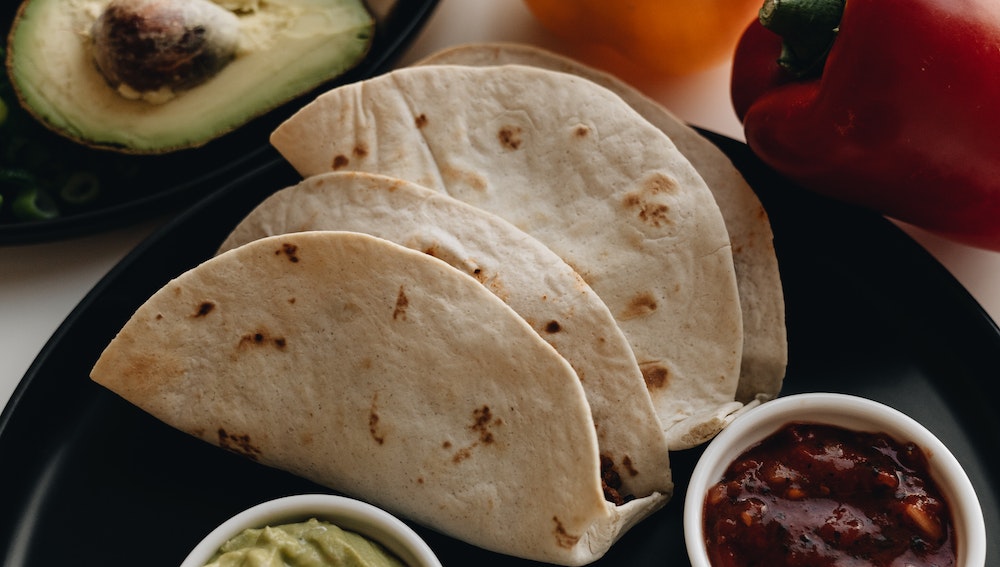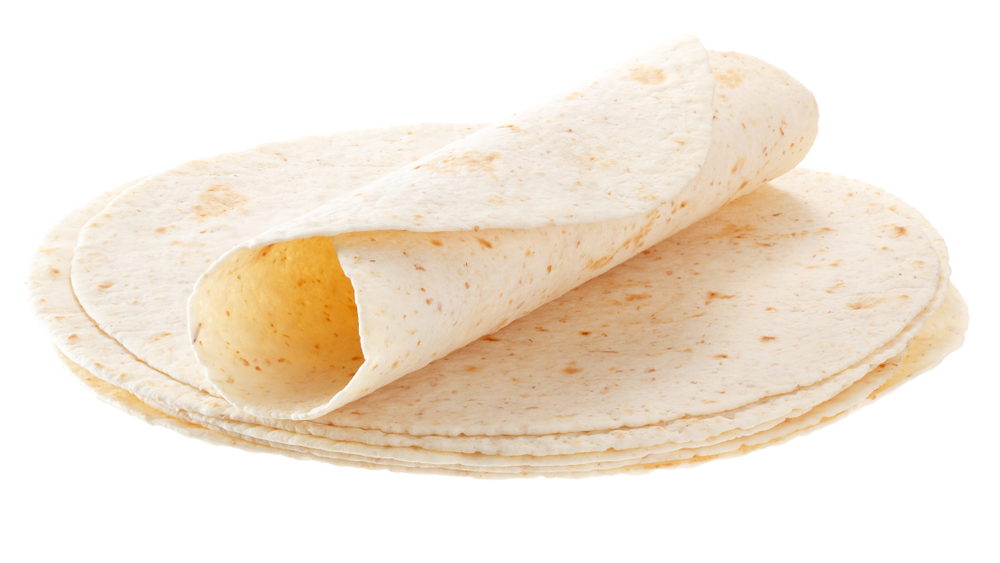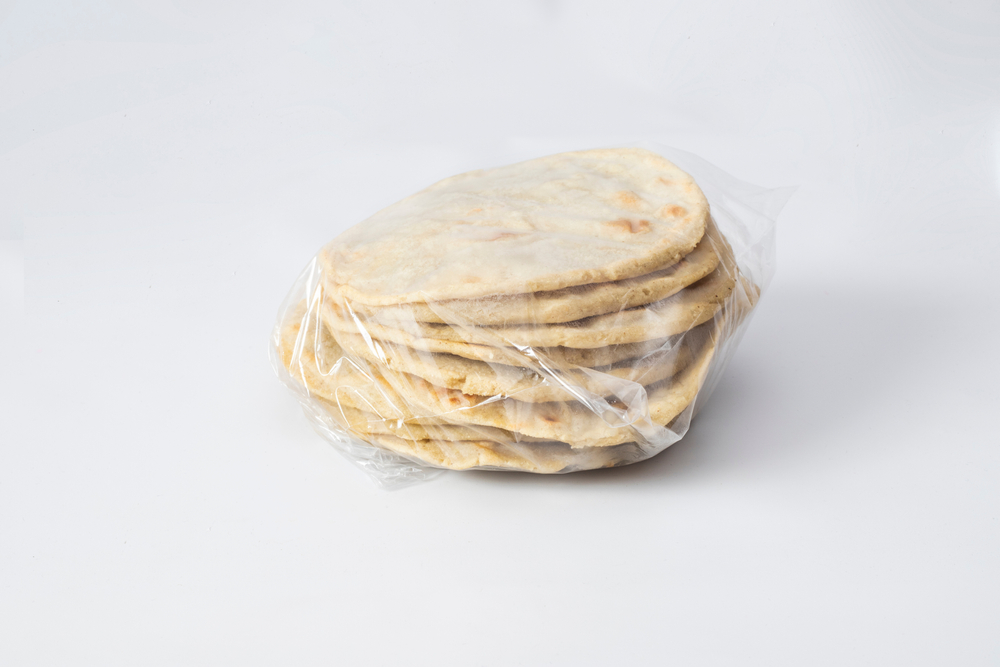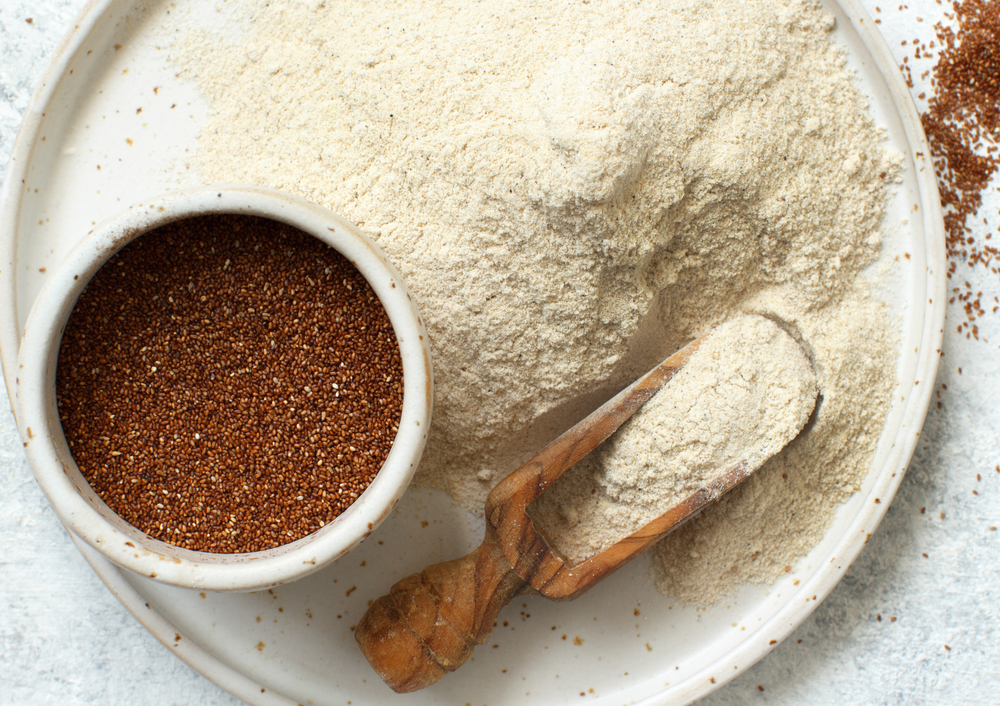Tortillas are a staple in Mexican cuisine and have become increasingly popular in other parts of the world. They are versatile and can be used in a variety of dishes, from tacos to quesadillas, and even as a substitute for bread.
However, like any food, tortillas have a shelf life. In this article, we will explore the topic of how long tortillas last and provide tips on how to properly store them to preserve their quality and freshness.
There are different types of tortillas, including corn and flour tortillas, and each has its own shelf life. Proper storage methods also play a crucial role in determining how long tortillas last. Signs of spoilage, such as mold or a sour smell, can indicate that tortillas have gone bad and should be discarded.
Additionally, we will discuss the importance of health and safety considerations when it comes to consuming tortillas that may be past their prime.
Key Takeaways
- Tortillas have a shelf life that varies depending on the type of tortilla and how they are stored.
- Proper storage methods can help prolong the shelf life of tortillas and preserve their quality and freshness.
- Signs of spoilage should be taken seriously, and health and safety considerations should be kept in mind when consuming tortillas.
Types of Tortillas

When it comes to tortillas, there are several types to choose from. Each type has its own unique flavor and texture. In this section, we will discuss the most common types of tortillas and their characteristics.
Corn Tortillas
Corn tortillas are made from masa harina, which is a type of corn flour. They are a staple in Mexican cuisine and have a slightly sweet flavor. Corn tortillas are gluten-free and are a good source of fiber.
They are also low in fat and calories. Corn tortillas are usually smaller than flour tortillas and are used for tacos, enchiladas, and other Mexican dishes.
Flour Tortillas
Flour tortillas are made from wheat flour and are a staple in Tex-Mex cuisine. They have a soft, chewy texture and a mild flavor. Flour tortillas are larger than corn tortillas and are used for burritos, quesadillas, and other Tex-Mex dishes. They are higher in calories and fat than corn tortillas.
Spinach Tortillas
Spinach tortillas are made from a mixture of spinach and wheat flour. They have a green color and a slightly earthy flavor. Spinach tortillas are a good source of vitamins and minerals and are often used for wraps and sandwiches.
Homemade Tortillas
Homemade tortillas are made from scratch using flour, water, and other ingredients. They are often thicker and more flavorful than store-bought tortillas. Homemade tortillas can be made with different types of flour, such as cornmeal or whole wheat flour, to add flavor and texture.
In conclusion, tortillas come in different types, each with its own unique flavor and texture. Corn tortillas are gluten-free and a good source of fiber, while flour tortillas are larger and higher in calories and fat. Spinach tortillas are a good source of vitamins and minerals, and homemade tortillas can be customized to suit individual tastes.
Shelf Life of Tortillas

Tortillas are a staple food in many households, but how long do they last? The shelf life of tortillas depends on several factors, such as storage conditions and the type of tortilla. In this section, we will discuss the shelf life of tortillas and the best ways to store them.
In the Pantry
Corn tortillas can last for about a week to 10 days when stored in the pantry. Flour tortillas, on the other hand, can last for up to two weeks. However, it is important to note that these are just estimates, and the actual shelf life may vary depending on the quality of the tortillas and the storage conditions.
To extend the shelf life of tortillas stored in the pantry, it is recommended to keep them in an airtight container or plastic bag. This will help prevent moisture from getting in, which can cause the tortillas to spoil faster.
In the Refrigerator
Tortillas can last longer when stored in the refrigerator. Corn tortillas can last for up to six to eight weeks, while flour tortillas can last for up to three to four weeks. Again, these are just estimates, and the actual shelf life may vary.
To store tortillas in the refrigerator, it is best to keep them in their original packaging or transfer them to an airtight container or plastic bag. This will help keep them fresh and prevent them from drying out.
In the Freezer
If you want to extend the shelf life of tortillas even further, you can store them in the freezer. Both corn and flour tortillas can be frozen for up to six months beyond the printed “best by” date.
To freeze tortillas, it is best to wrap them in plastic wrap or aluminum foil and then place them in a resealable freezer bag or container. This will help prevent freezer burn and keep the tortillas fresh.
In conclusion, the shelf life of tortillas can vary depending on the type of tortilla and storage conditions. To extend the shelf life of tortillas, it is best to store them in an airtight container or plastic bag, keep them in the refrigerator or freezer, and always check the “best by” date before consuming.
Proper Storage Methods

When it comes to storing tortillas, proper storage methods are crucial to keep them fresh for as long as possible. Here are some recommended storage methods:
Resealable Packaging
Tortillas often come in resealable packaging, which is convenient for storage. Make sure to seal the package tightly after use to prevent air and moisture from getting in. If the package is not resealable, transfer the tortillas to a sealable bag or container.
Airtight Containers
Another option for storing tortillas is in an airtight container. This will help keep them fresh by preventing air and moisture from getting in. Make sure the container is the right size for the tortillas, so they don’t get squished or bent.
Aluminum Foil
Wrapping tortillas in aluminum foil is another way to keep them fresh. Wrap them tightly, so air and moisture can’t get in. This method is especially useful for transporting tortillas or storing them in the pantry.
Freezer Bags
If you want to freeze tortillas, use freezer bags. These bags are designed to prevent freezer burn and protect the tortillas from moisture. Make sure to remove as much air as possible before sealing the bag to prevent freezer burn.
Regardless of the storage method, tortillas should always be stored in a cool, dry place. If you live in a humid climate, it’s best to refrigerate or freeze tortillas to prevent mold growth. Proper storage methods can help extend the shelf life of tortillas and keep them fresh for longer.
Signs of Spoilage

Tortillas are a pantry staple that can last for a long time if stored properly. However, like any other food item, they can go bad if not consumed within a certain time frame.
It is essential to know the signs of spoilage to avoid consuming bad tortillas that can lead to food poisoning. Here are some common signs of spoilage to look out for:
Discoloration
One of the most noticeable signs of spoilage in tortillas is discoloration. Fresh tortillas are usually light in color, but if they start to turn yellow or gray, it is an indication that they are no longer fresh. Discoloration can be caused by exposure to air, moisture, or heat. If you notice any discoloration, it is best to discard the tortillas.
Unpleasant Smell
Another sign of spoiled tortillas is an unpleasant smell. Fresh tortillas have a mild, slightly sweet aroma, but if they start to smell sour or musty, it is an indication that they are no longer fresh.
The unpleasant smell can be caused by mold formation or bacterial growth. If you notice any unpleasant smell, it is best to discard the tortillas.
Mold Formation
Mold formation is a clear indication that tortillas have gone bad. Mold can grow on tortillas if they are not stored properly or if they are past their best-by date. Mold can be white, green, or black and can cover the entire tortilla or just a part of it. If you notice any mold formation, it is best to discard the tortillas.
It is important to note that consuming spoiled tortillas can lead to food poisoning, which can cause symptoms such as nausea, vomiting, and diarrhea. Therefore, it is crucial to check for signs of spoilage before consuming tortillas.
Preserving Quality and Freshness
When it comes to preserving the quality and freshness of tortillas, there are a few things to keep in mind. Tortillas are vulnerable to air, sunlight, and moisture, which can cause them to harden or grow mold.
To prevent this, it’s important to store them properly.
Freezing Tortillas
Freezing tortillas is a great way to prolong their shelf life. To freeze tortillas, wrap them tightly in plastic wrap or aluminum foil and place them in an airtight container.
This will help prevent freezer burn and keep them fresh for up to 6 to 8 months. When ready to use, simply thaw them in the refrigerator or microwave.
Refrigerating Tortillas
Refrigerating tortillas is another option for preserving their freshness. To refrigerate tortillas, place them in an airtight container or resealable plastic bag.
They can last up to 1 week in the refrigerator. It’s important to note that refrigerating tortillas can cause them to dry out, so it’s best to wrap them in a damp paper towel or cloth before storing them.
Storing at Room Temperature
Storing tortillas at room temperature is also an option, but they will not last as long as when stored in the freezer or refrigerator. Tortillas can last up to 2 to 3 days when stored at room temperature in a cool, dry place away from direct sunlight.
It’s important to keep in mind that humidity and water content can affect the shelf life of tortillas, so it’s best to store them in airtight containers or resealable plastic bags.
Overall, freezing tortillas is the best way to preserve their quality and freshness for an extended period of time. Refrigerating tortillas is also a good option, but they may dry out faster. Storing tortillas at room temperature should only be done for a short period of time.
By following these storage guidelines, tortillas can be enjoyed at their best for longer periods of time.
Tortillas in Cooking

Tortillas are a versatile ingredient that can be used in a variety of dishes, from tacos and burritos to enchiladas and chilaquiles. They can also be used as a pizza base or to make flautas and tostadas. In this section, we will explore some of the ways that tortillas are used in cooking.
Tacos and Burritos
Tacos and burritos are two of the most popular dishes that use tortillas. Tacos are typically made with a soft tortilla that is filled with meat, vegetables, and toppings. Burritos are similar, but they are larger and often include rice and beans as well.
When making tacos or burritos, it is important to use fresh tortillas. Tortillas that have been sitting in the pantry for too long can become dry and brittle, making them difficult to work with. To keep tortillas fresh, store them in an airtight container or plastic bag in the refrigerator or freezer.
Enchiladas and Chilaquiles
Enchiladas and chilaquiles are two dishes that use tortillas that have been softened in a sauce. Enchiladas are typically filled with meat or cheese and covered in a chili sauce, while chilaquiles are made by simmering tortilla strips in a sauce until they are soft.
When making enchiladas or chilaquiles, it is important to use tortillas that are soft and pliable. Stale tortillas can become mushy and fall apart in the sauce. To soften tortillas, heat them in a dry skillet or wrap them in damp paper towels and microwave them for a few seconds.
Tortilla Soup
Tortilla soup is a popular Mexican dish that is made with chicken broth, vegetables, and tortilla strips. The tortilla strips are usually fried until they are crispy and then added to the soup just before serving.
When making tortilla soup, it is important to use fresh tortillas for the tortilla strips. Stale tortillas will not fry up properly and will not be as crispy as fresh tortillas. To make the tortilla strips, cut fresh tortillas into thin strips and fry them in hot oil until they are crispy and golden brown.
In conclusion, tortillas are a versatile ingredient that can be used in a variety of dishes. It is important to use fresh tortillas that are soft and pliable for dishes like tacos and enchiladas, and fresh tortillas that are crispy for dishes like tortilla soup.
By following these tips, you can ensure that your tortilla-based dishes turn out perfectly every time.
Health and Safety Considerations
Food Safety
When it comes to tortillas, food safety is a crucial factor to consider. Tortillas are made from grains, which are prone to bacterial growth. Therefore, it is essential to ensure that tortillas are stored and handled correctly to avoid contamination.
One of the essential things to keep in mind when handling tortillas is to avoid cross-contamination. This means that you should keep your tortillas away from other foods that may contain harmful bacteria.
Additionally, it is crucial to wash your hands and any utensils or surfaces that come into contact with the tortillas thoroughly.
Expiration Dates
Another important consideration when it comes to tortillas is their expiration dates. Tortillas typically have a shelf life of around one week if stored at room temperature and up to a month if kept in the refrigerator.
However, it is essential to check the expiration date on the package before consuming them.
Expired tortillas may not necessarily make you sick, but they may lose their freshness and quality. Therefore, it is always best to err on the side of caution and avoid consuming tortillas that have passed their expiration date.
It is also worth noting that tortillas are an excellent source of calcium, which is essential for healthy bones and teeth. However, the calcium content in tortillas may vary depending on the type of grain used to make them.
Therefore, it is essential to read the nutritional information on the package to determine the calcium content of the tortillas you are consuming.
In summary, when handling tortillas, it is crucial to consider food safety to avoid contamination and ensure that they are stored and handled correctly. Additionally, it is essential to check the expiration date on the package before consuming tortillas to avoid consuming expired or low-quality products.
Frequently Asked Questions
How long do tortillas last in the fridge after expiration date?
Tortillas can last in the fridge for up to a week after their expiration date. However, it is important to note that the longer they sit in the fridge, the less fresh they will be. To ensure maximum freshness, it is recommended to consume tortillas before their expiration date.
How long do fresh tortillas last in the fridge?
Fresh tortillas can last up to a week in the fridge. However, it is important to store them properly to maintain their freshness. Place them in an airtight container or wrap them tightly in plastic wrap to prevent them from drying out.
What to do with expired tortillas?
If tortillas are expired, it is best to discard them. Consuming expired tortillas can lead to food poisoning or other health issues. It is always better to be safe than sorry.
What does mold on tortillas look like?
Mold on tortillas can appear as white, green, or black spots. It is important to discard tortillas with any signs of mold, as consuming mold can be harmful to one’s health.
How long do homemade tortillas last?
Homemade tortillas can last up to a week in the fridge and up to six months in the freezer. It is important to store them properly to maintain their freshness.
How long are Mission flour tortillas good for after expiration date?
Mission flour tortillas can last up to a week in the fridge after their expiration date. However, it is important to note that the longer they sit in the fridge, the less fresh they will be. To ensure maximum freshness, it is recommended to consume tortillas before their expiration date.







